Abstract
Many developed countries are faced with the problem of reorganizing their tuberculosis-control programme to bring it into line with modern conditions. The study reported was undertaken to provide guidelines for this reorganization. It was begun in the district of Kolín, Czechoslovakia, with a population of some 100 000, in 1961 and is still in progress. The paper covers the first 4 years of the study.
In 1961 a thorough check-up was made on all persons registered as having active or inactive tuberculosis, or fibrotic lung lesions. In 1961 and 1963 a mass X-ray and tuberculin-testing campaign, with 95% coverage, was carried out for all persons over 14 years of age. All persons with active tuberculosis received adequate treatment. Persons registered as having tuberculosis or suspected tuberculosis were subjected to regular photofluorographic and bacteriological investigations. Newborn infants were given BCG vaccination, and persons aged 14 years and 19 years with negative tuberculin reactions were vaccinated.
The prevalence of bacillary tuberculosis fell from 150 cases in 1960 to 91 in 1964, mainly owing to a decrease in the number of chronic cases. The incidence of bacillary tuberculosis detectable by direct smear microscopy, however, remained at about 25 cases throughout the period 1961-64. The risk of developing tuberculosis was found to be highest in persons with fibrotic lung lesions or inactive tuberculosis, and in men above 45 years of age and women above 65 with previously normal photofluorograms.
It is concluded from the study that in developed countries priority should be given to adequate treatment of all persons with active tuberculosis, and to early diagnosis in persons consulting physicians and in the high-risk population groups.
Full text
PDF
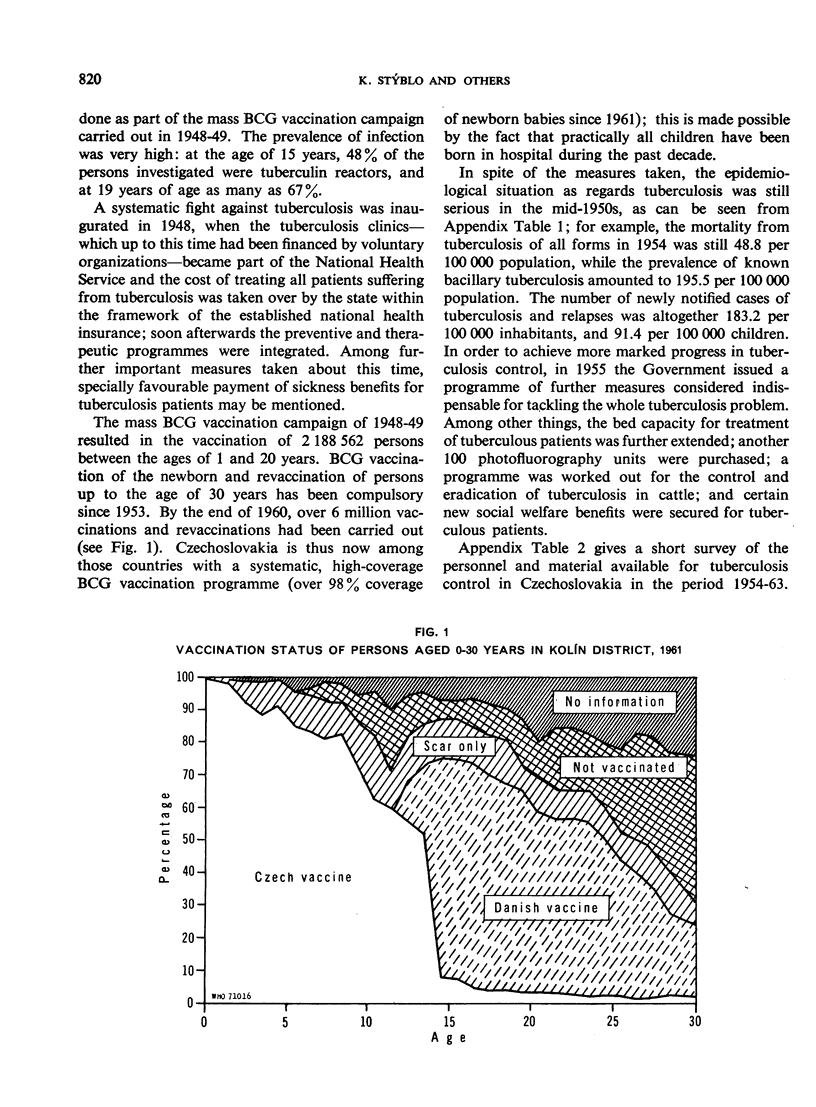
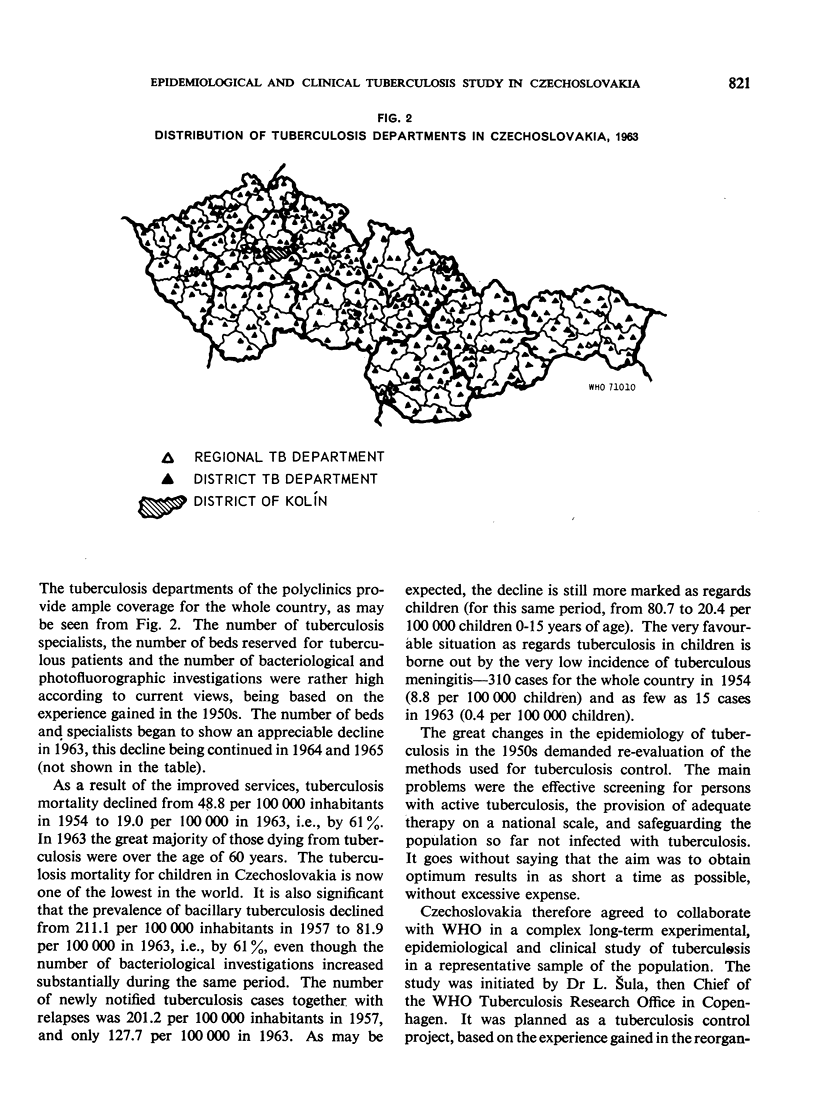
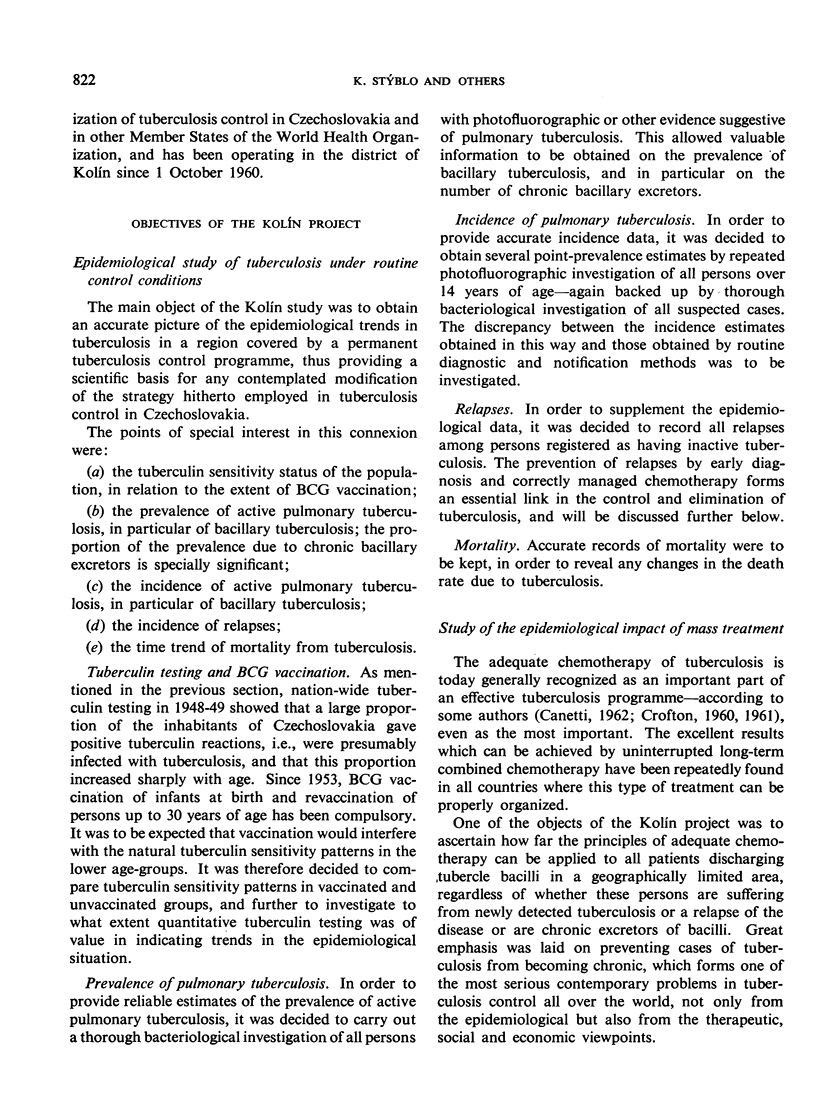
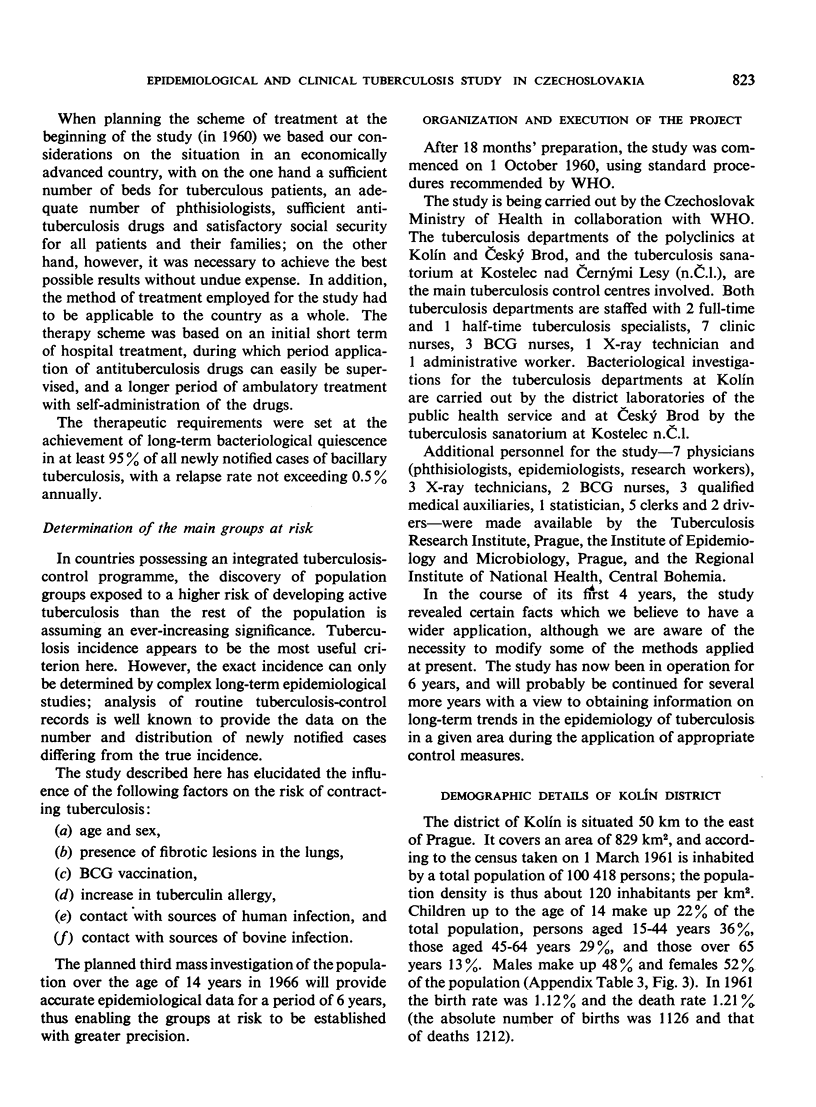


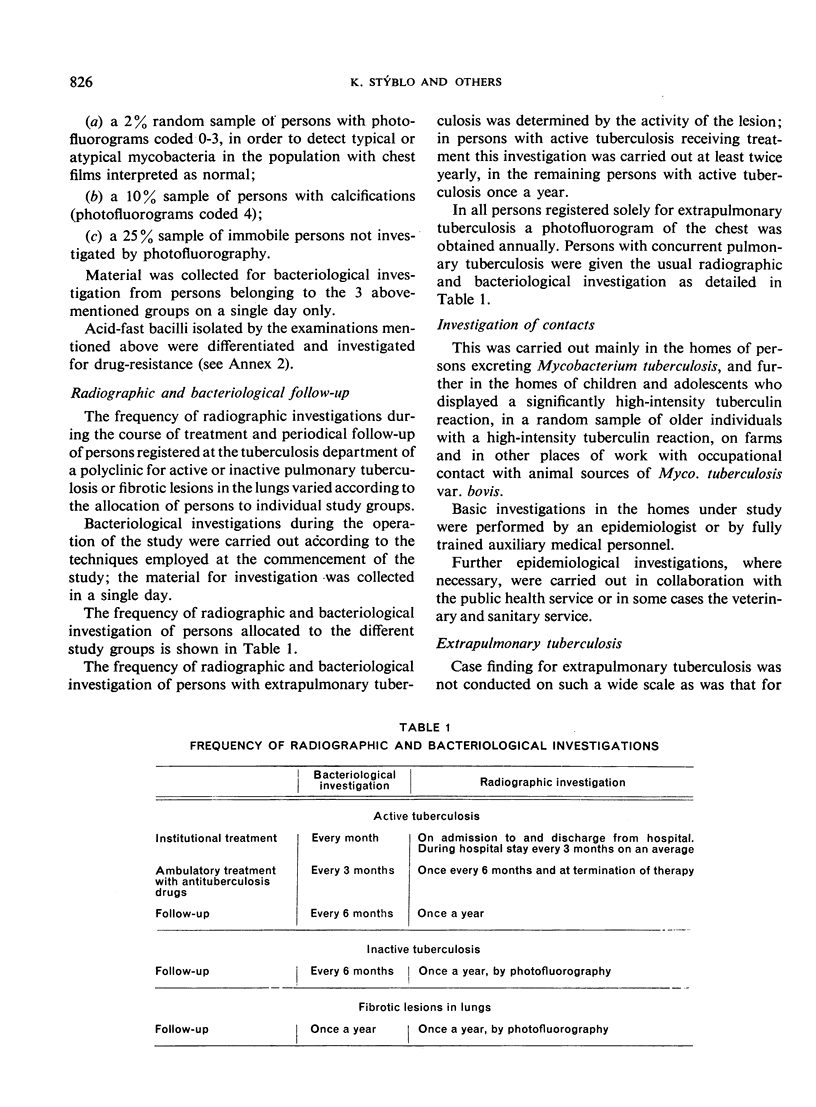
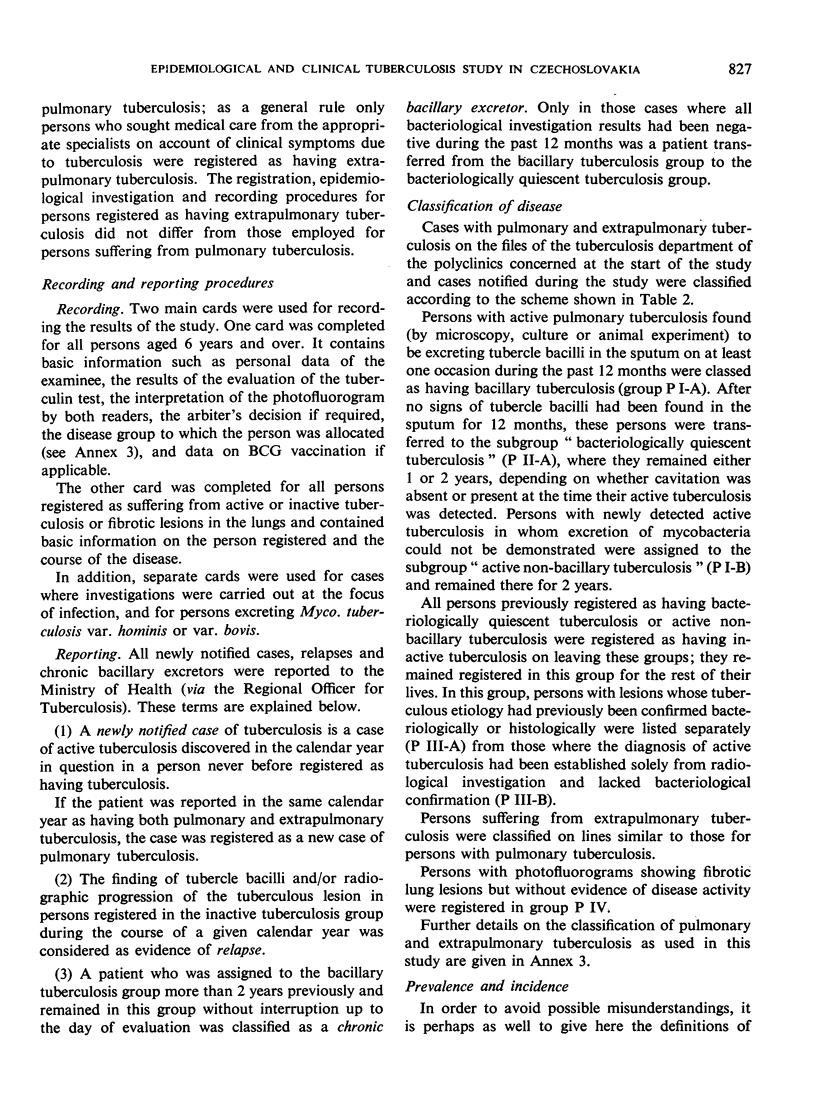
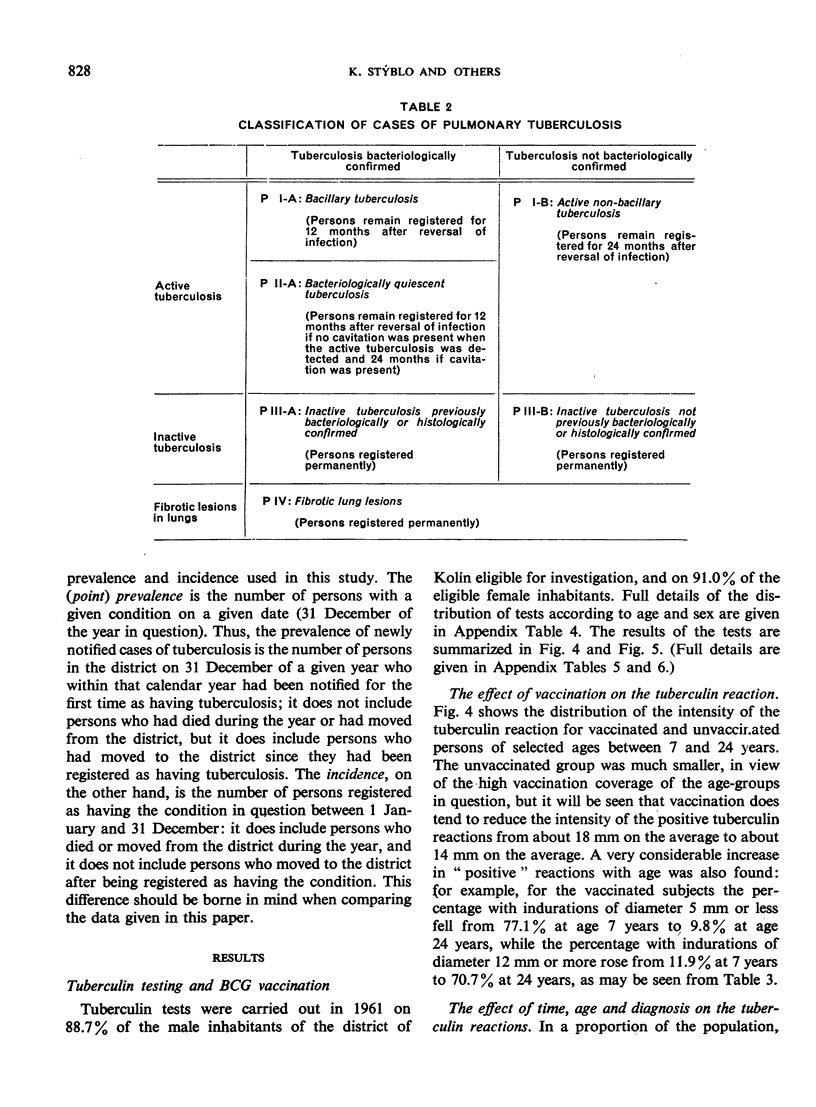


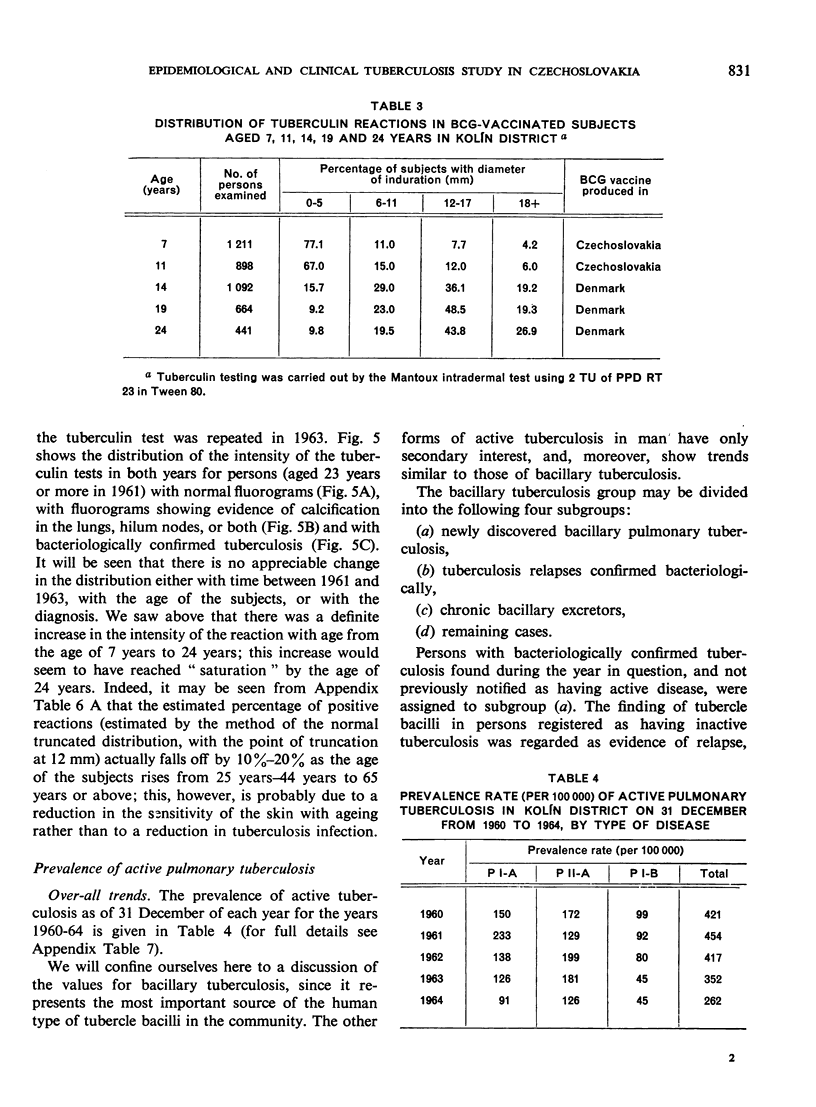


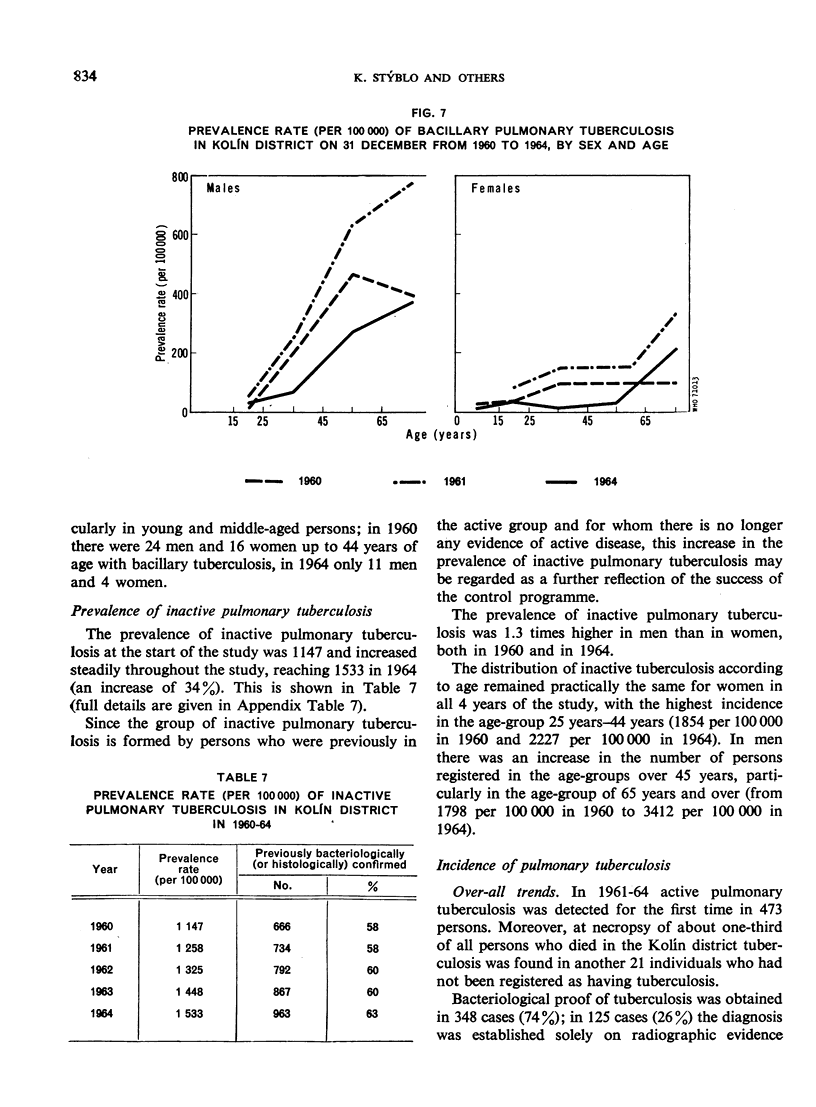
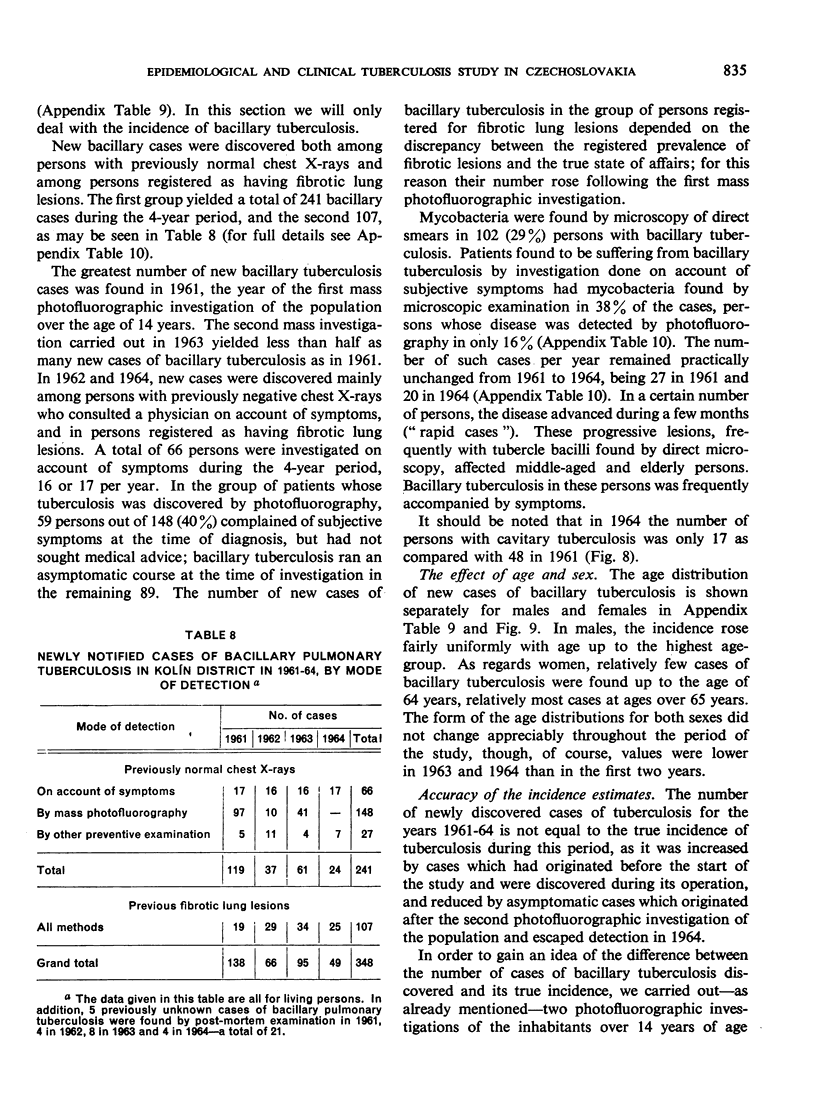
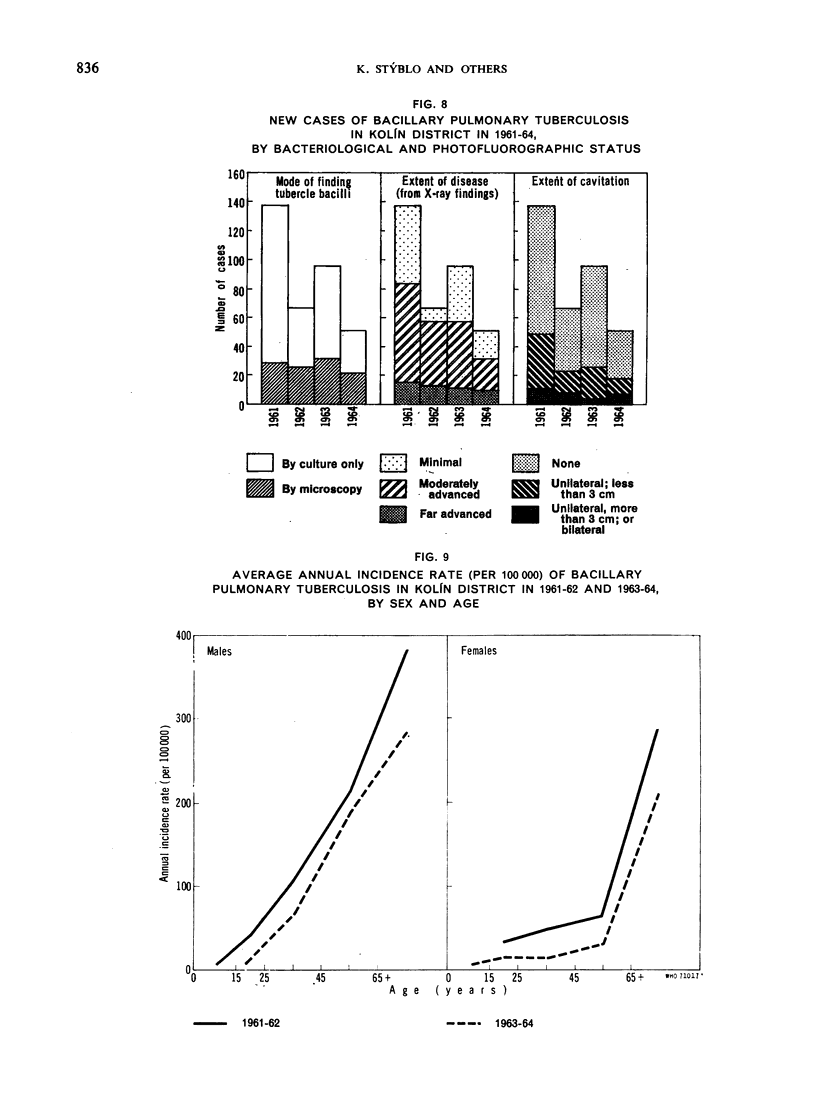

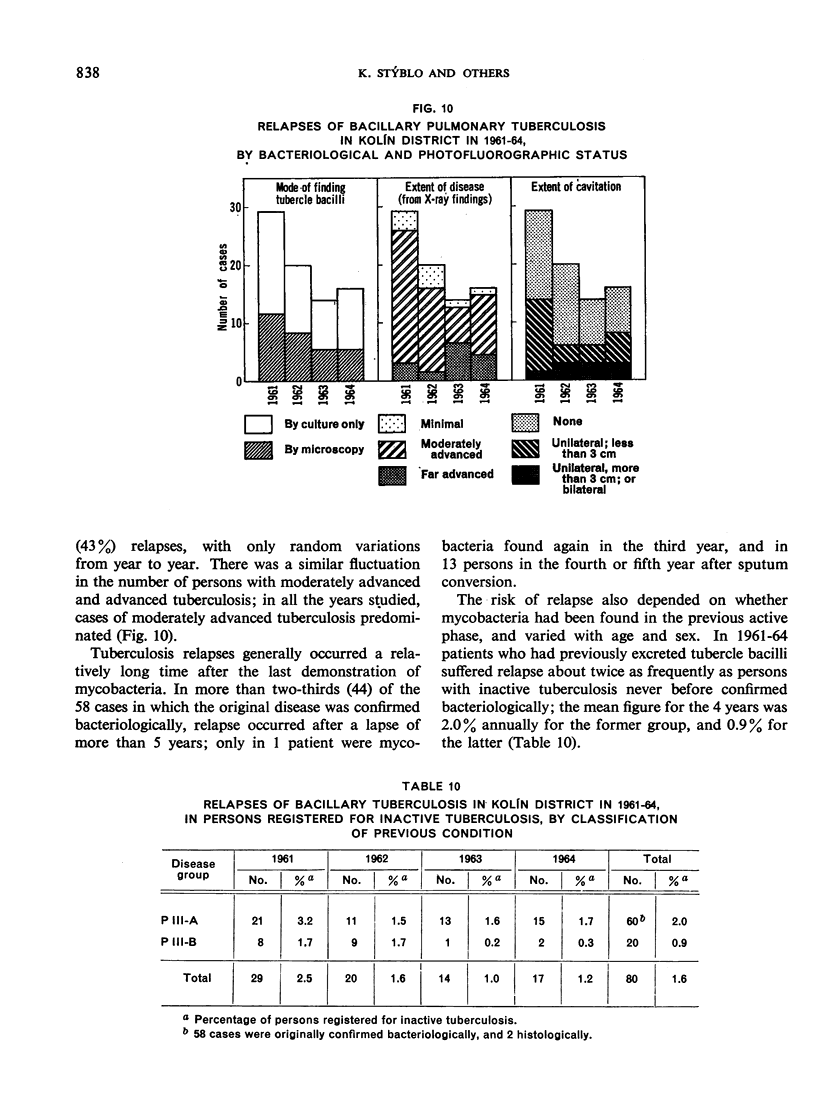
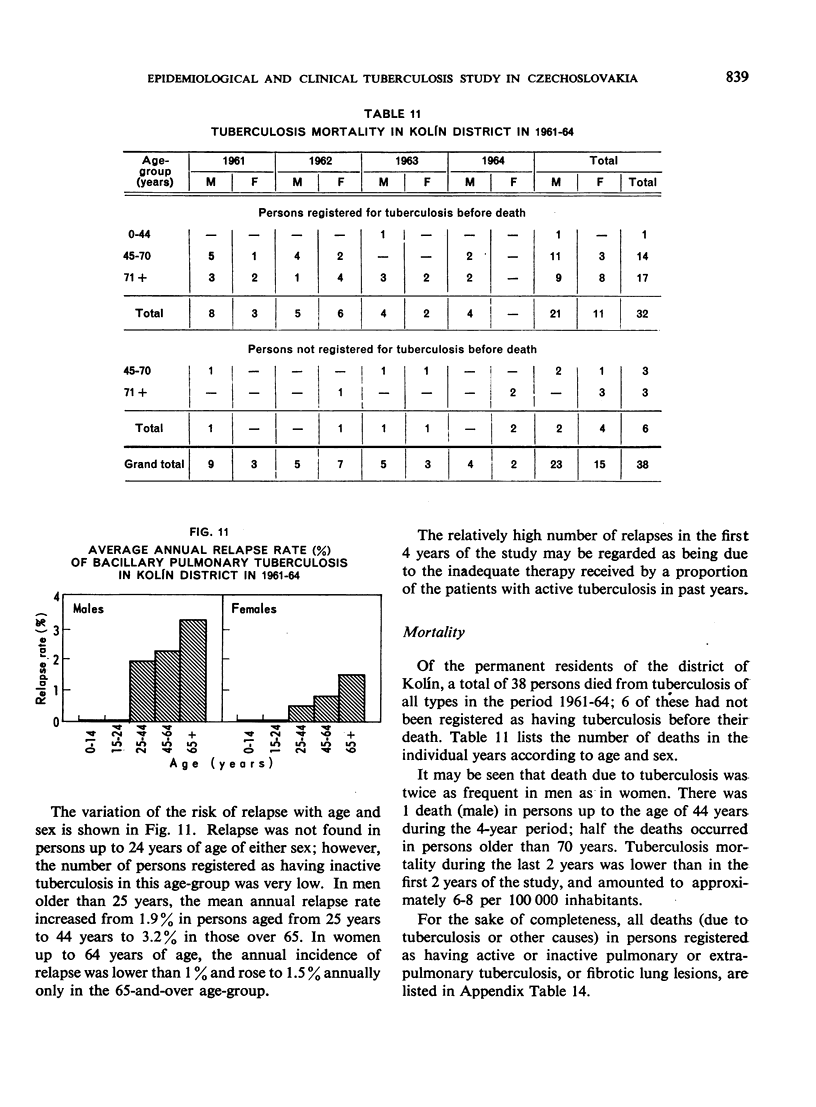
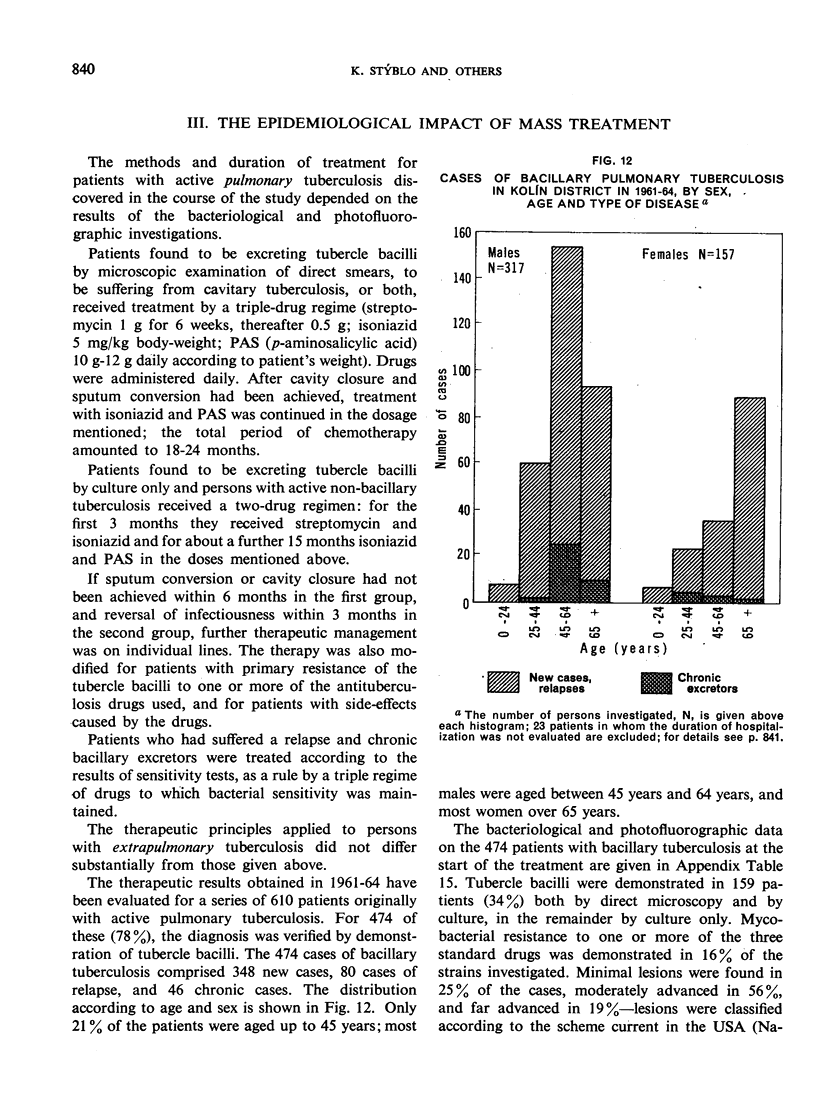

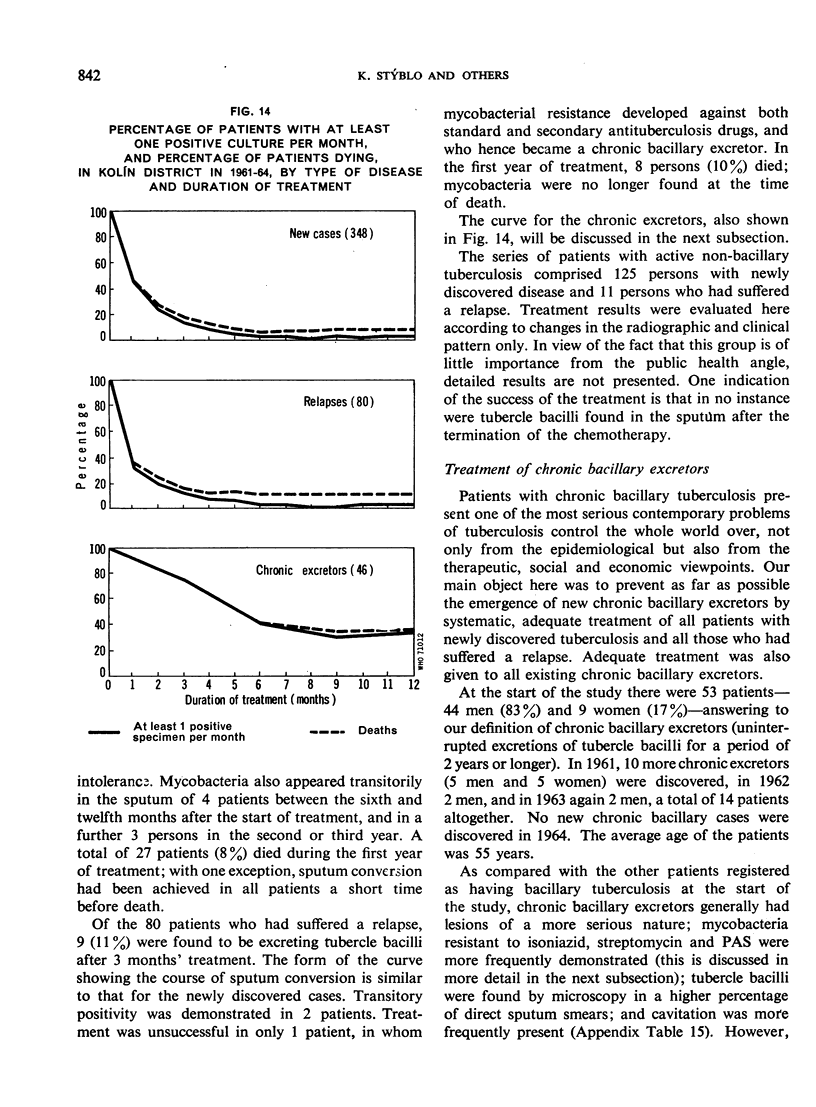


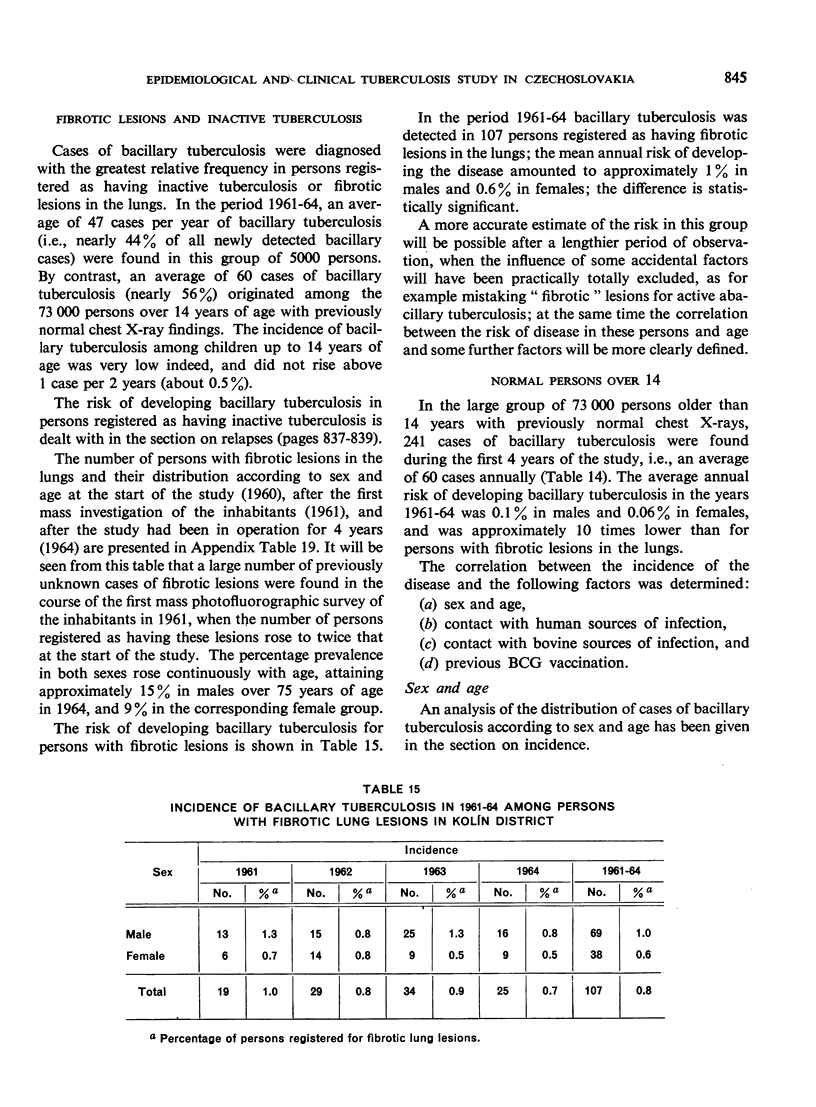
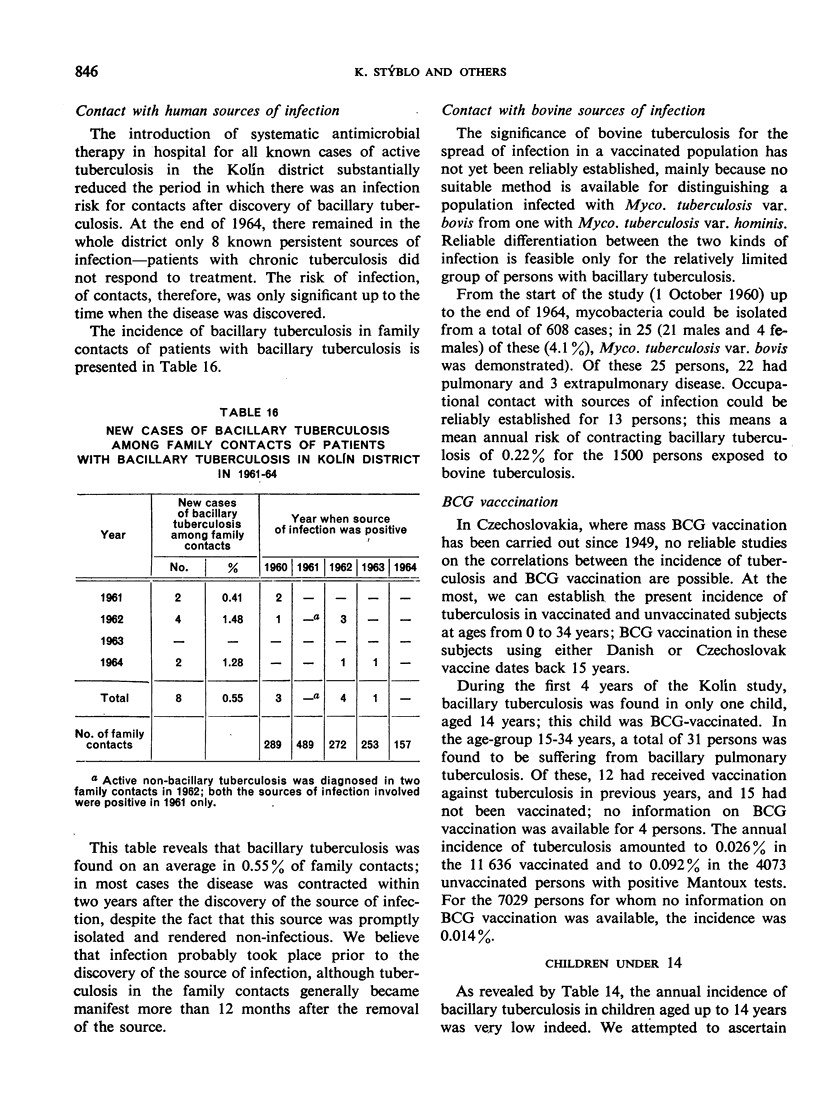
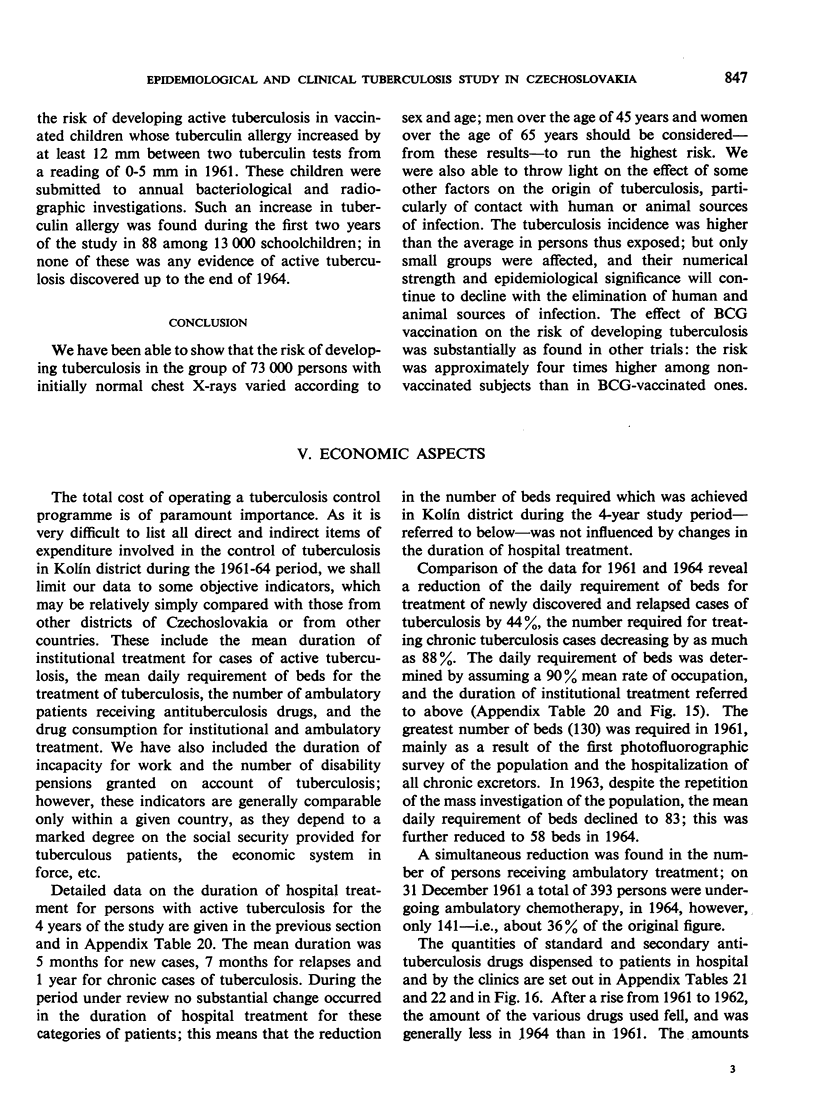

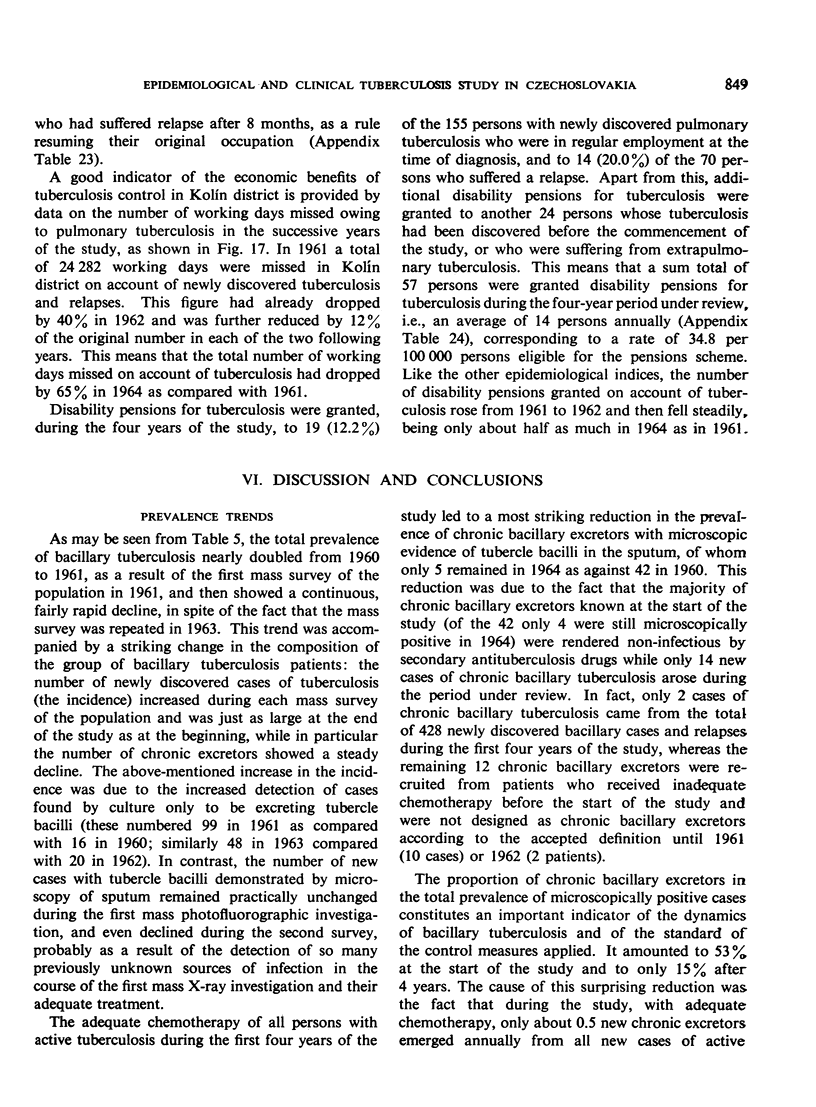
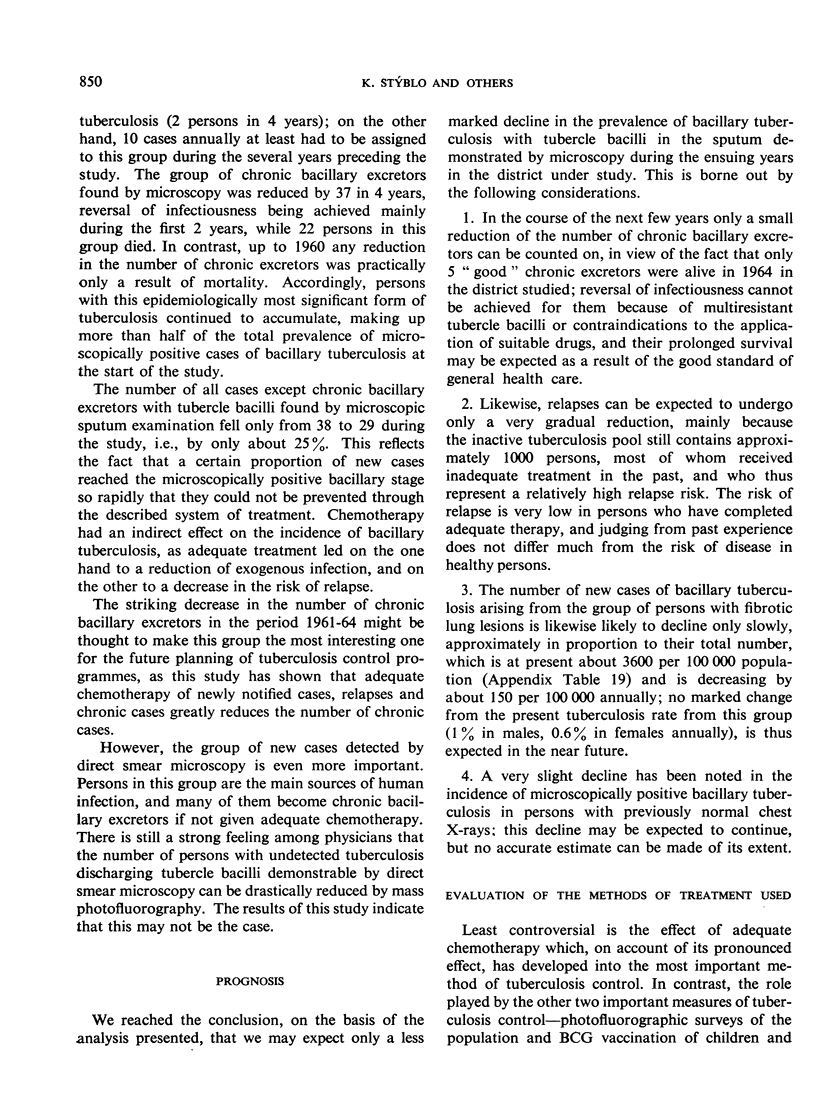
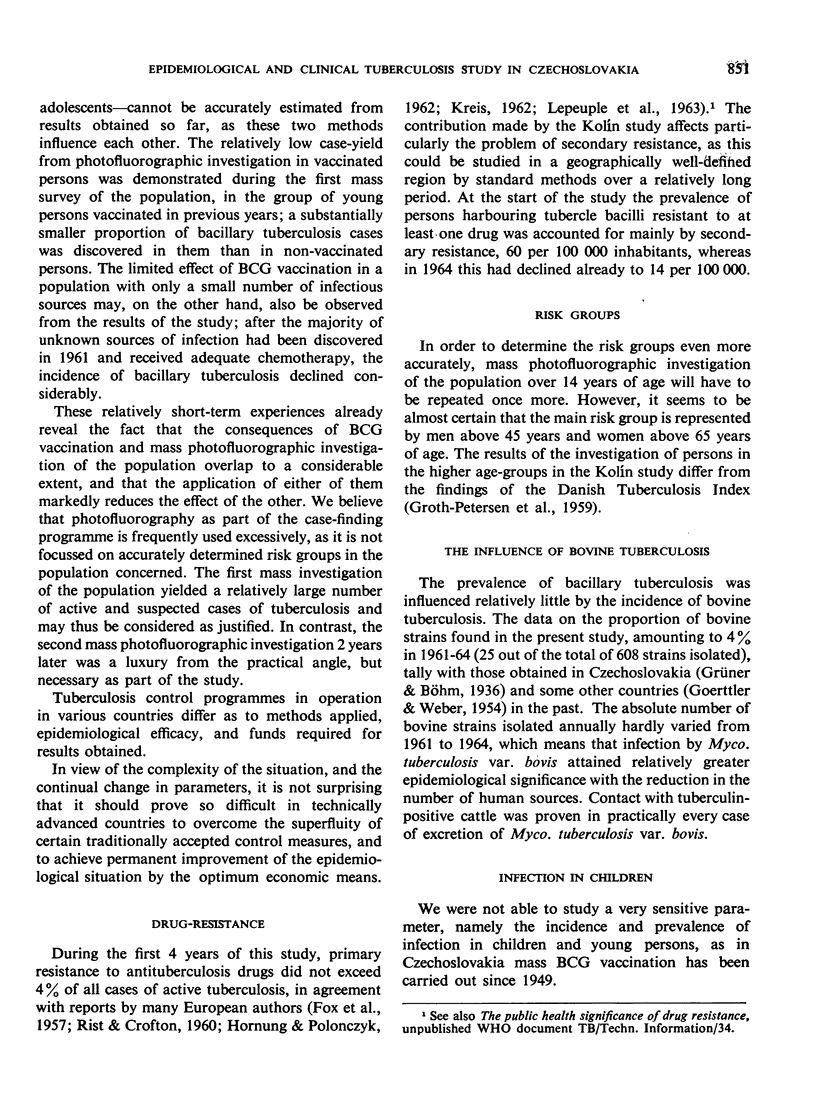

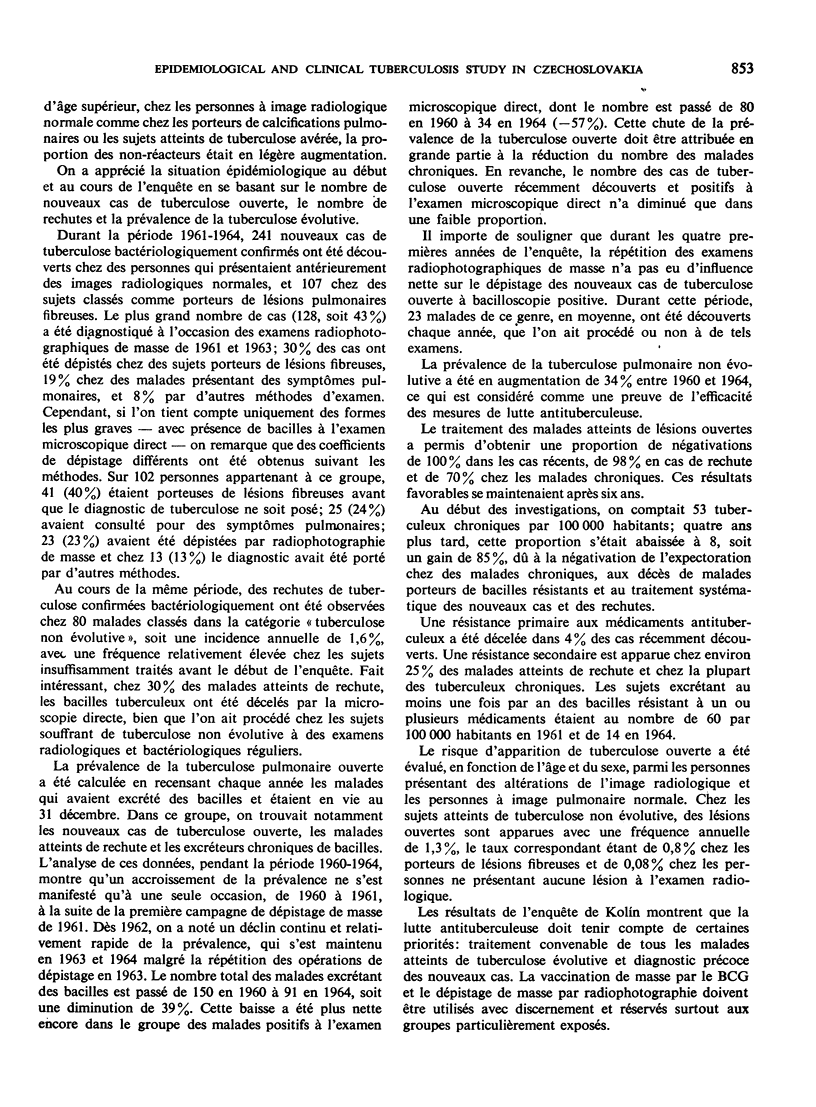

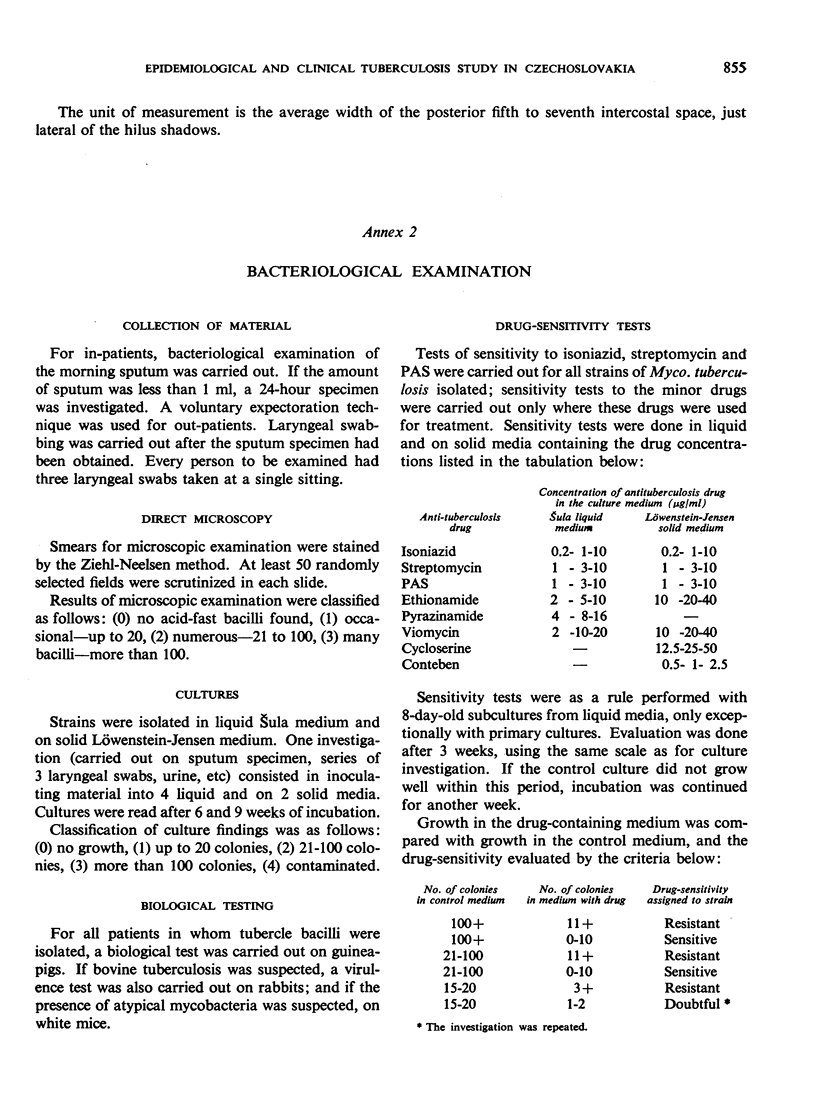

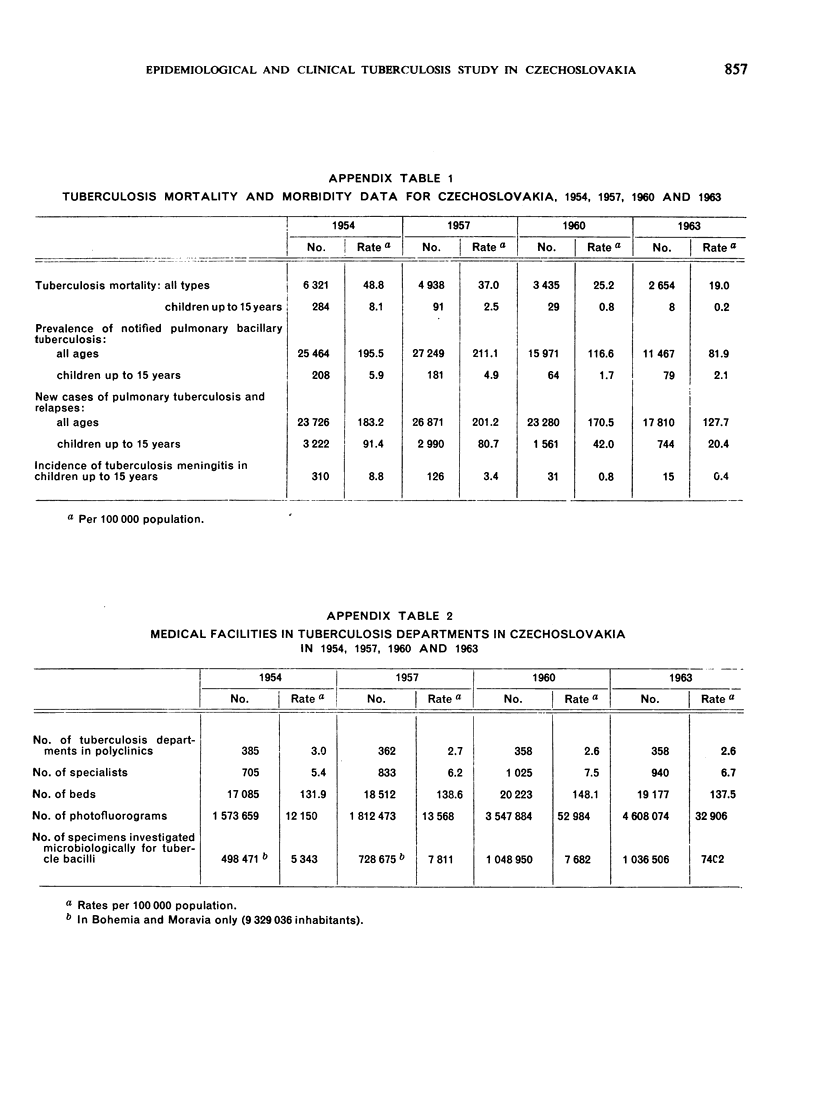

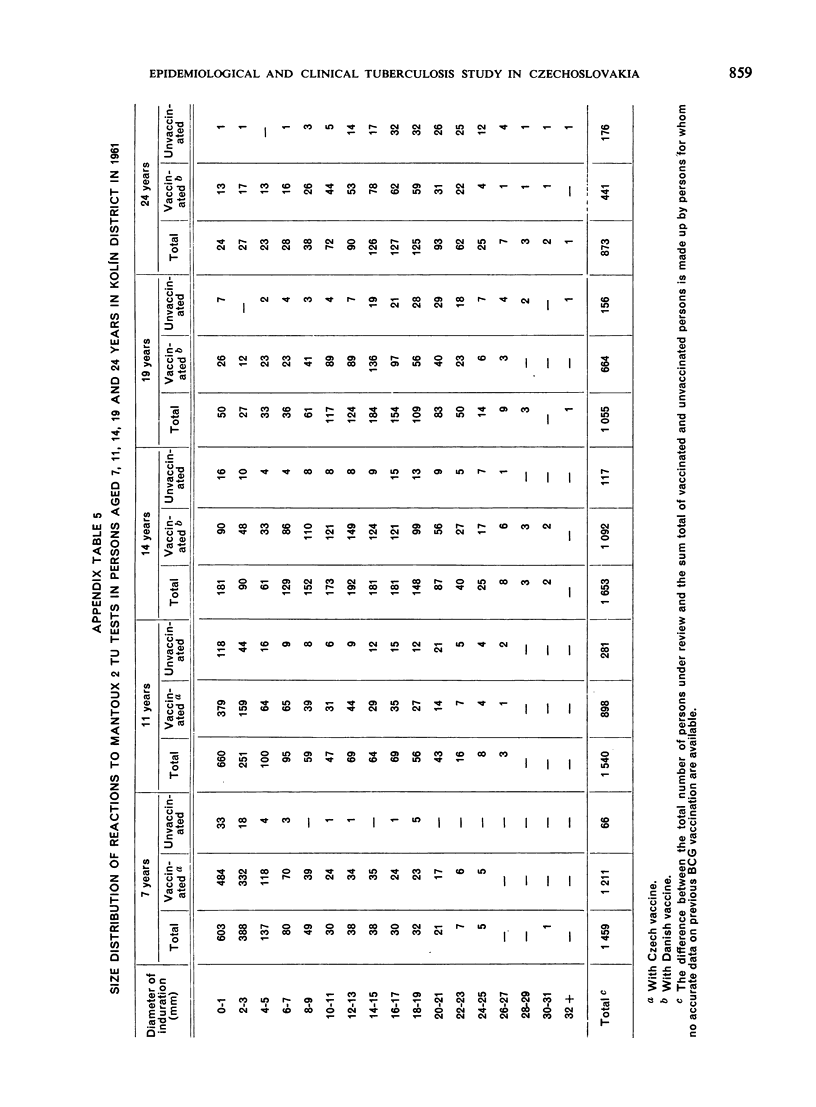
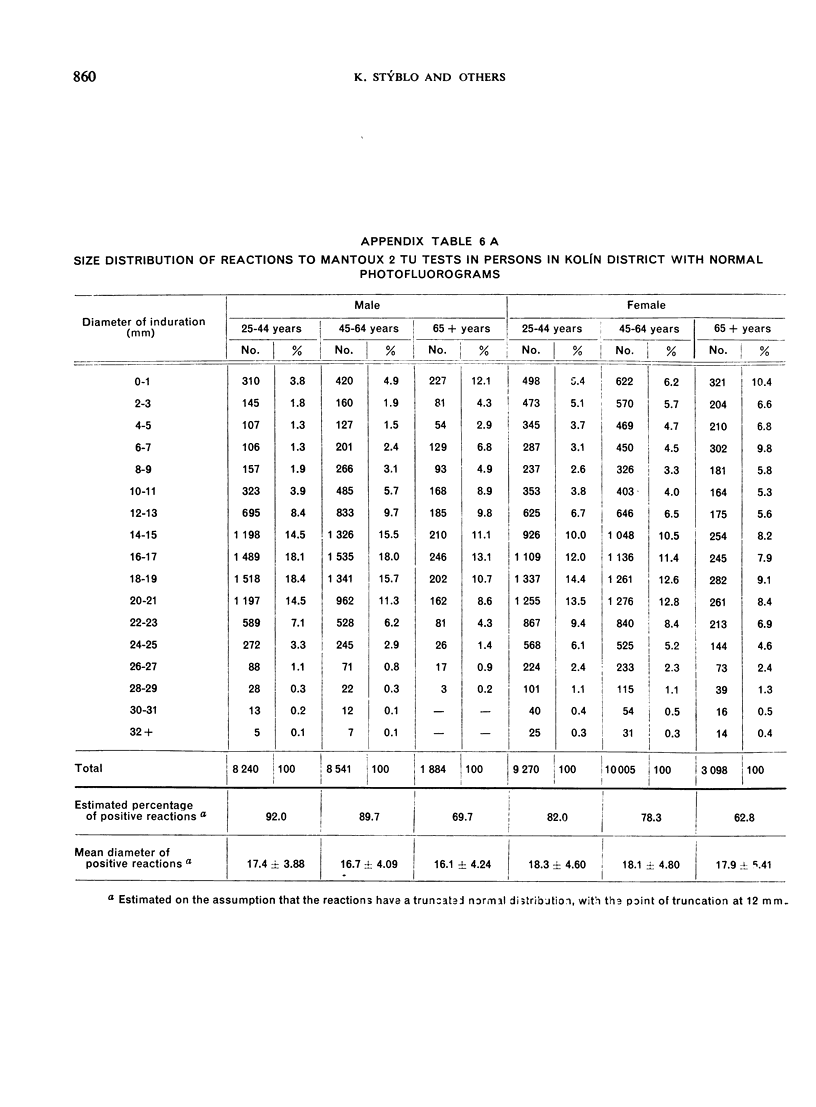

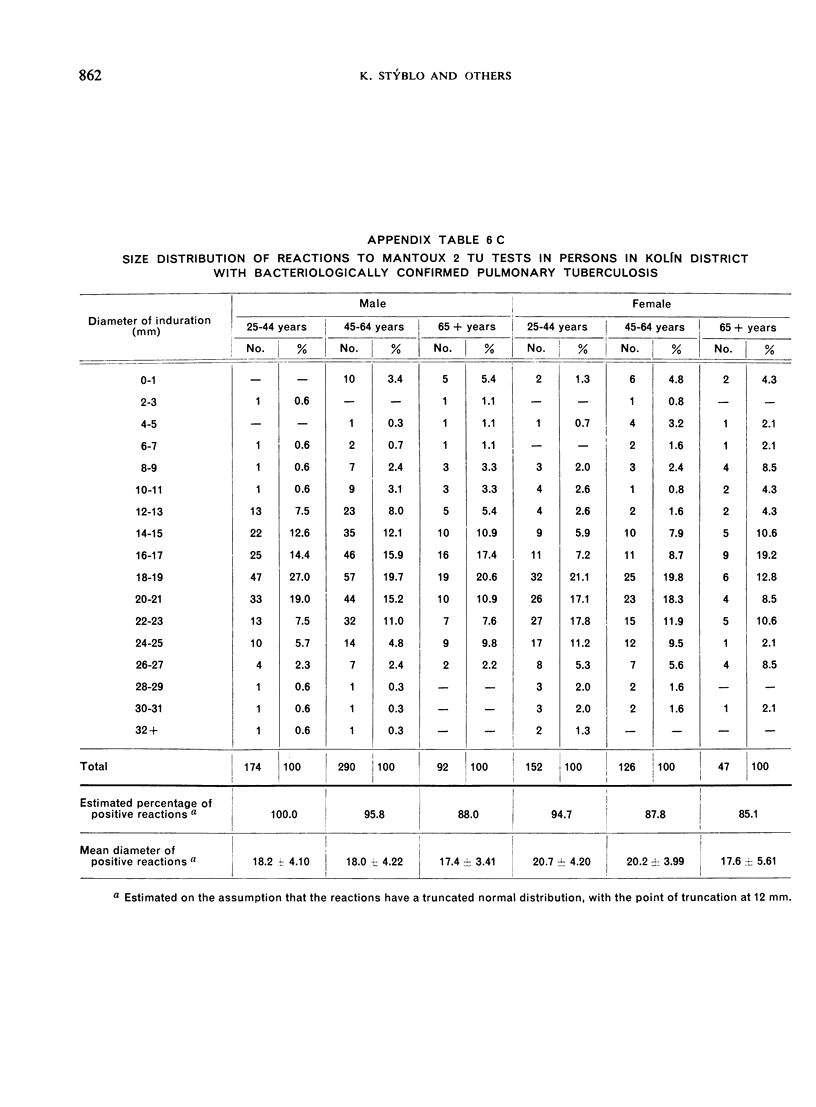
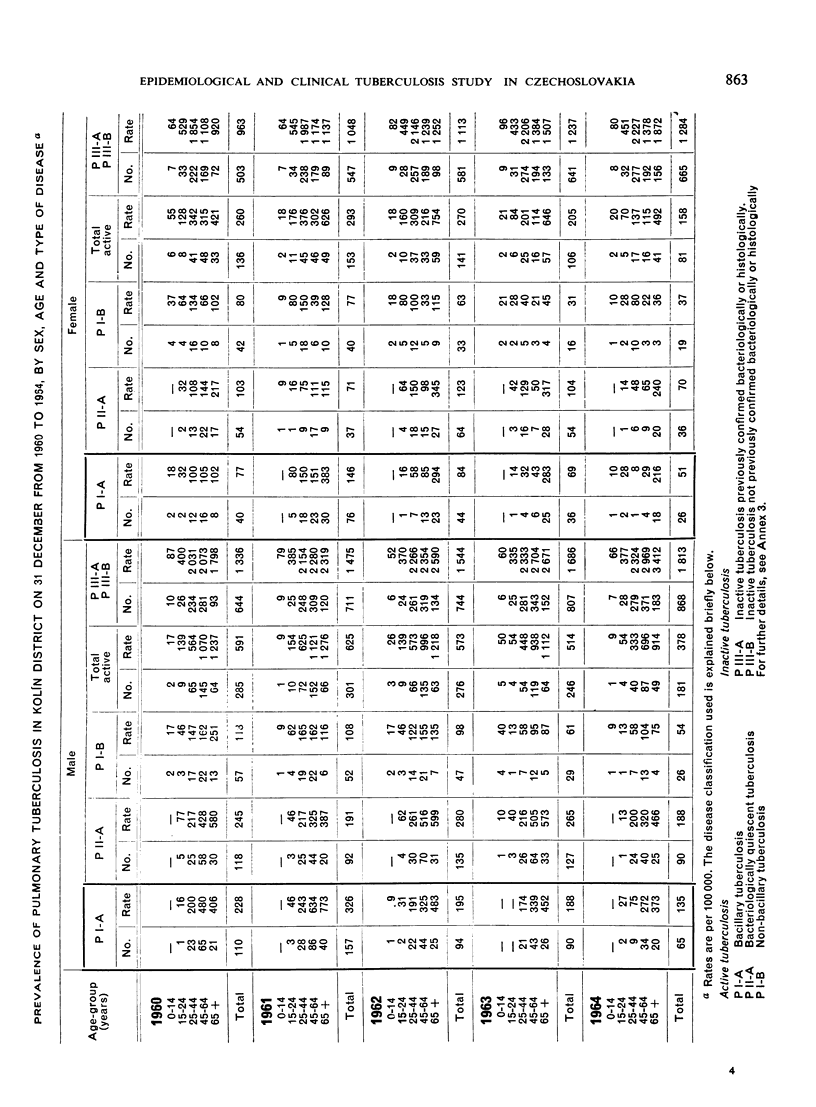
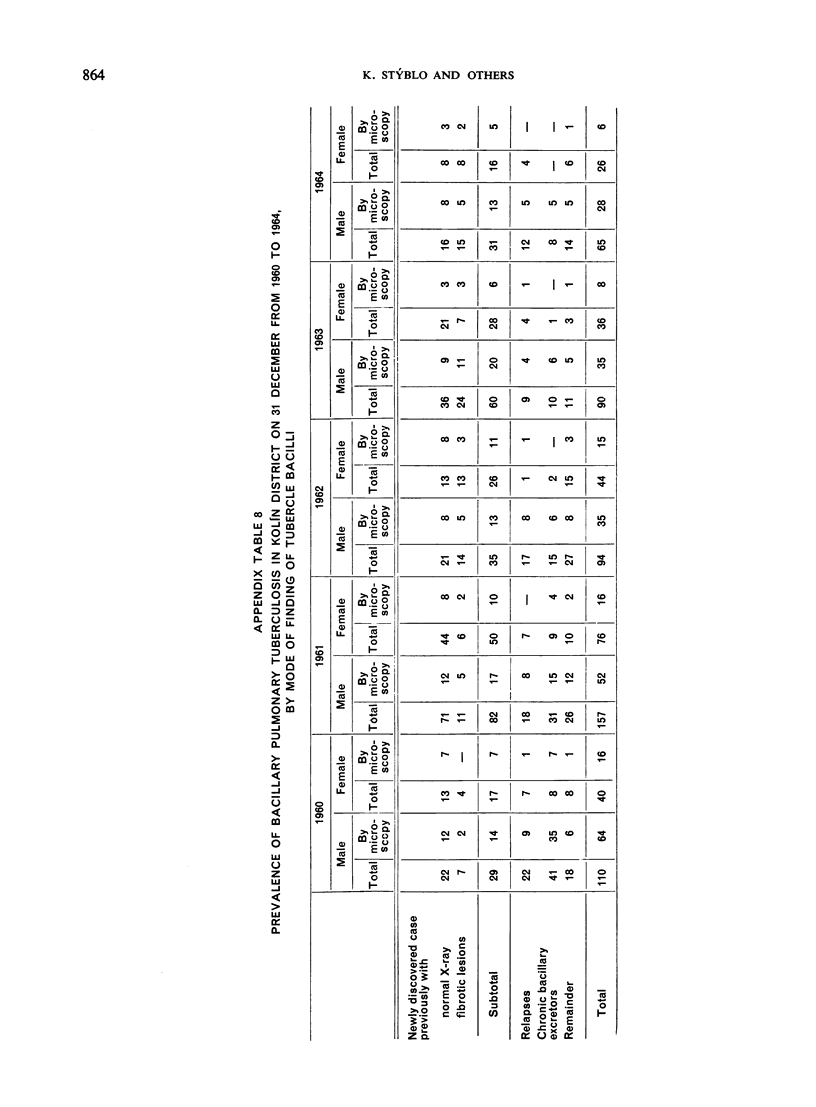



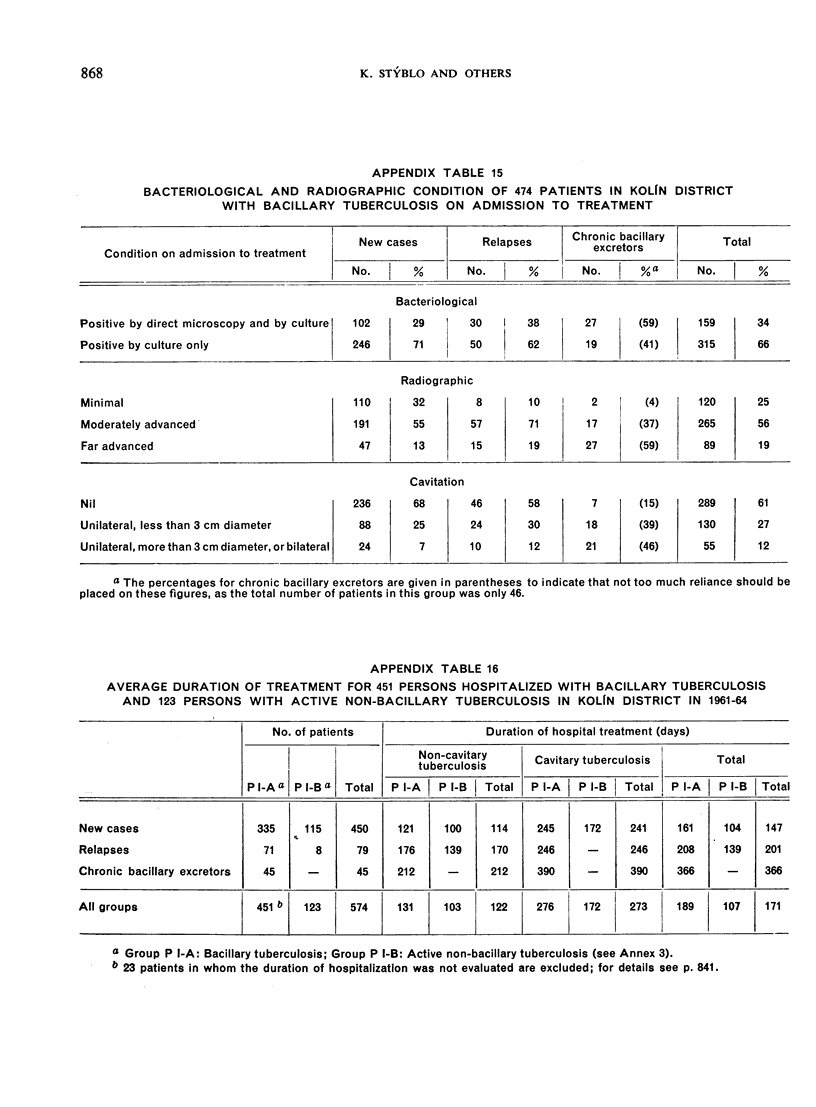



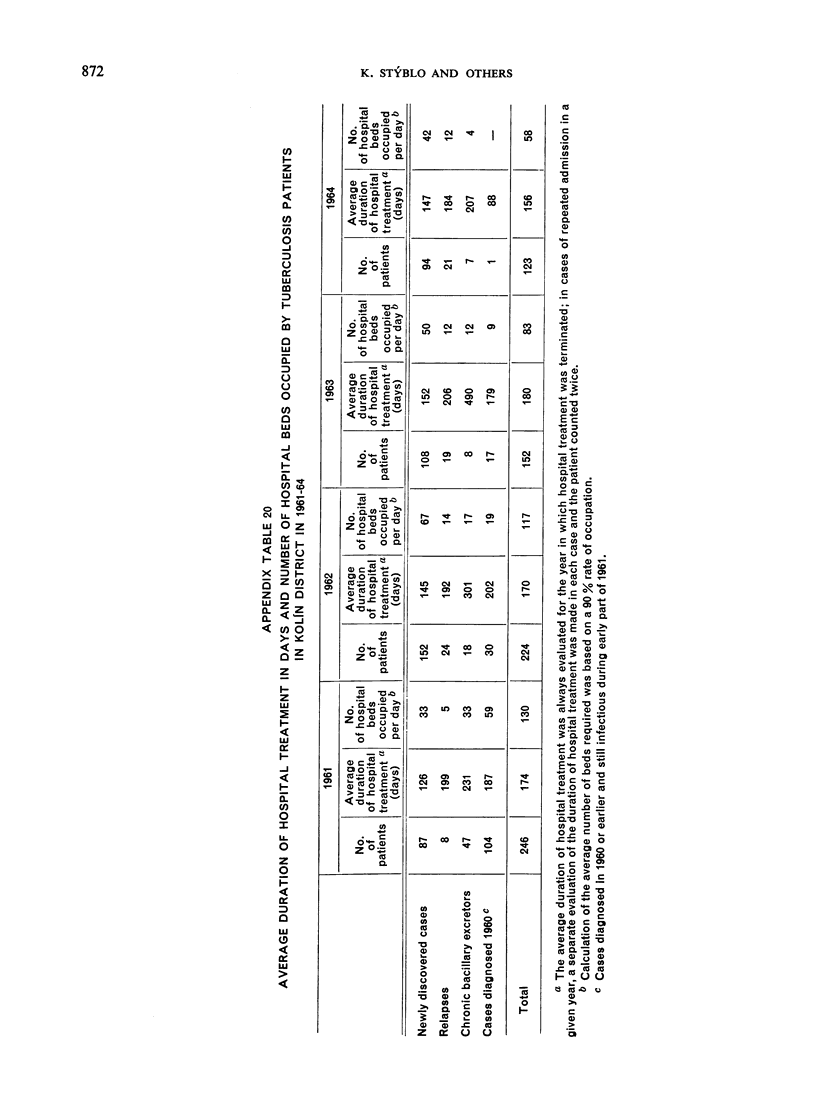

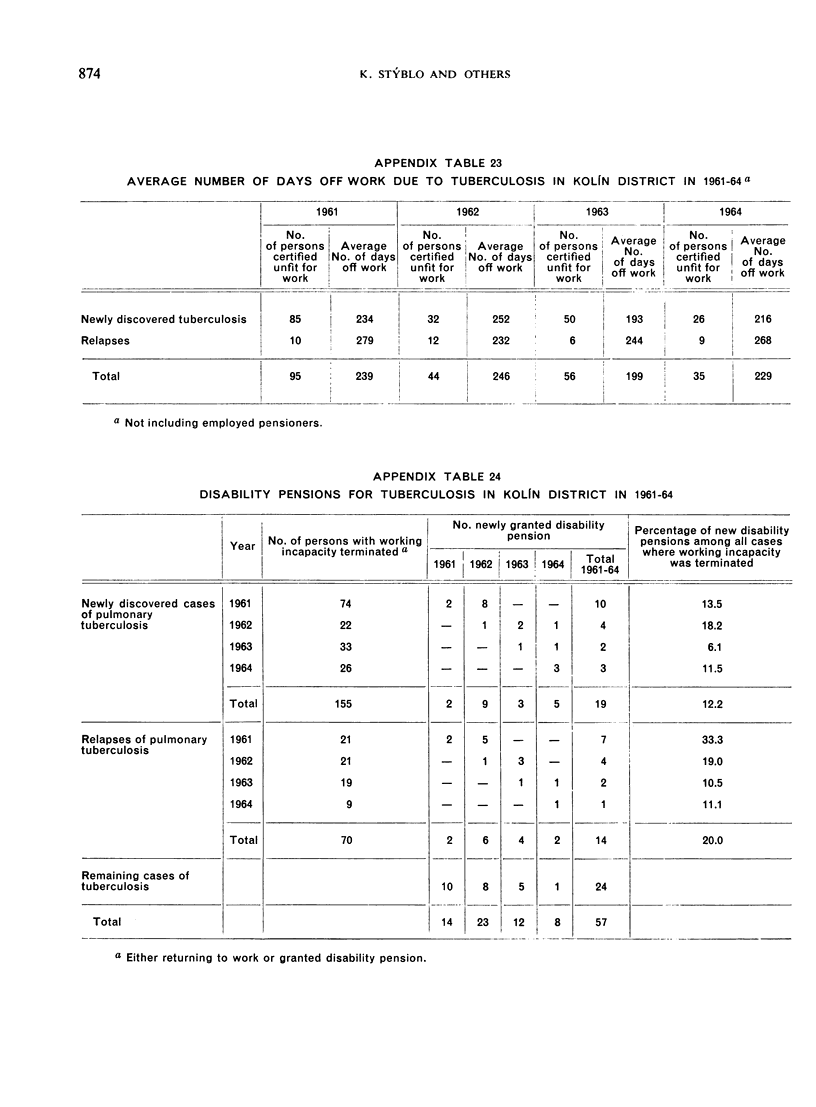
Selected References
These references are in PubMed. This may not be the complete list of references from this article.
- CROFTON J. Chemotherapeutic management of treatment failures and relapses in pulmonary tuberculosis. Am Rev Respir Dis. 1961 Aug;84:290–291. doi: 10.1164/arrd.1961.84.2.290. [DOI] [PubMed] [Google Scholar]
- CROFTON J. Tuberculosis undefeated. Br Med J. 1960 Sep 3;2(5200):679–687. doi: 10.1136/bmj.2.5200.679. [DOI] [PMC free article] [PubMed] [Google Scholar]
- FOX W., WIENER A., MITCHISON D. A., SELKON J. B., SUTHERLAND I. The prevalence of drug-resistant tubercle bacilli in untreated patients with pulmonary tuberculosis; a national survey, 1955-56. Tubercle. 1957 Apr;38(2):71–84. doi: 10.1016/s0041-3879(57)80001-4. [DOI] [PubMed] [Google Scholar]
- GROTH-PETERSEN E., KNUDSEN J., WILBEK E. Epidemiological basis of tuberculosis eradication in an advanced country. Bull World Health Organ. 1959;21:5–49. [PMC free article] [PubMed] [Google Scholar]
- HORNUNG S., POLONCZYK M. [Primary resistance to principal drugs in patients with pulmonary tuberculosis]. Gruzlica. 1962 Apr;30:349–358. [PubMed] [Google Scholar]
- KREIS B. [Primary resistance in tuberculosis]. Poumon Coeur. 1962;18:435–448. [PubMed] [Google Scholar]
- LEPEUPLE A., THIBIER R., VIVIEN J. N., CANETTI G., GROSSET J. [Identification of the sources of contagion in various cases of primary tuberculosis resistance]. Rev Tuberc Pneumol (Paris) 1963 Jan;27:53–66. [PubMed] [Google Scholar]


